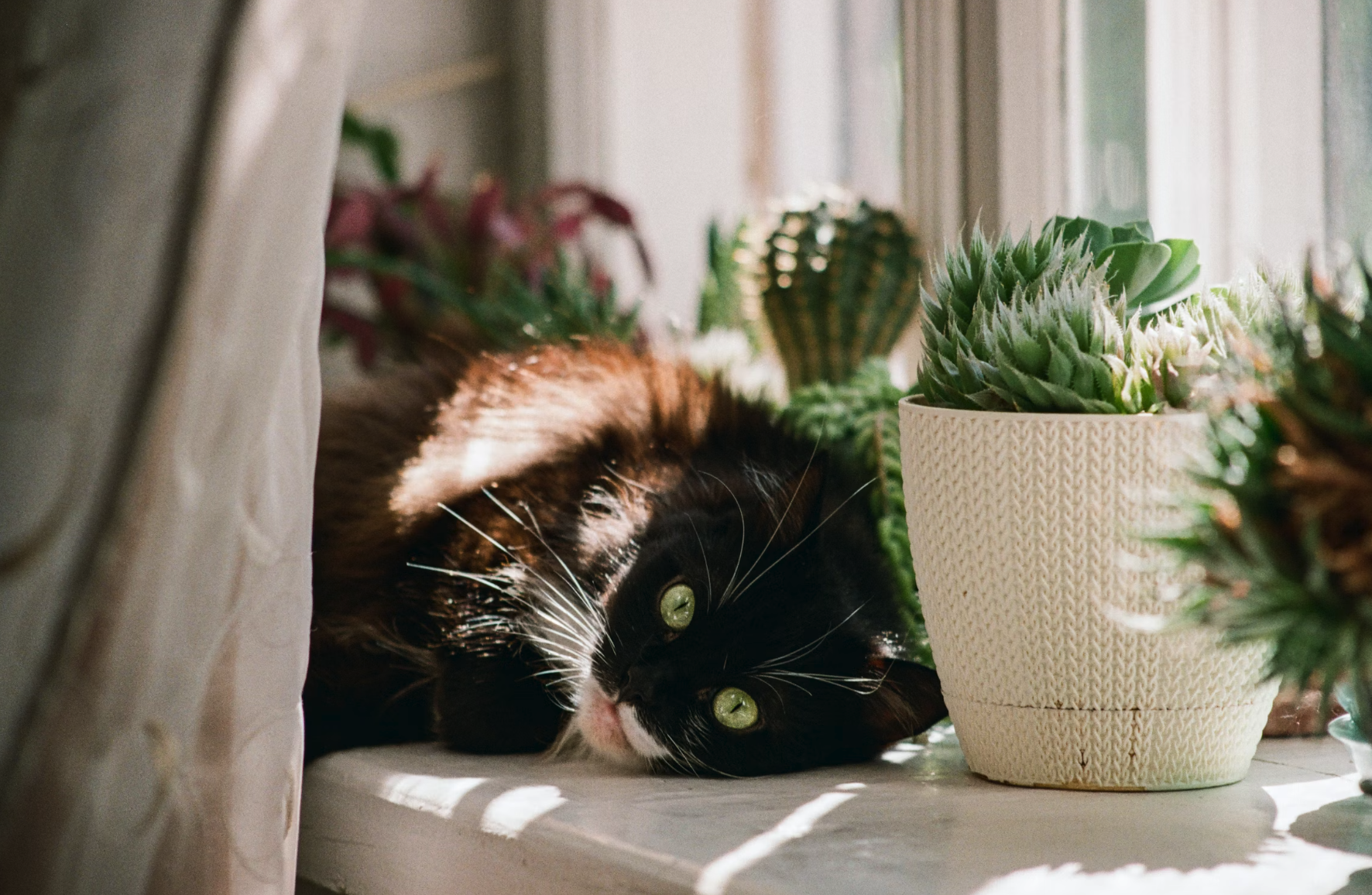Pet Friendly Houseplants
Bringing plants into your home doesn’t have to mean putting your pets at risk. Many popular houseplants are toxic, but there are great options that are completely safe for cats and dogs. Whether you're a plant beginner or just want to add more greenery without the stress, these plants check all the boxes.
Our Top 5 Pet Friendly Houseplants
Spider Plant
Safe for: Cats and dogs
Grows fast, handles a range of light, and helps clean the air. Cats may swat the leaves, but they’re safe even if they nibble.Areca Palm
Safe for: Cats and dogs
Adds tropical style and thrives in indirect light. Completely non-toxic and easy to manage.Boston Fern
Safe for: Cats and dogs
Great for bathrooms and humid spots. Full and feathery, with no toxic risks.Prayer Plant (Maranta)
Safe for: Cats and dogs
Low-light tolerant with bold patterns. Its leaf movement at night adds extra interest.Peperomia (all varieties)
Safe for: Cats and dogs
Small, colorful, and low-maintenance. Works well in small spaces and doesn’t mind lower light.
Keep in mind: Even pet-safe plants can become a problem if your animal likes to chew, dig, or knock things over. A plant that’s harmless to one pet might still cause issues for another based on curiosity or behavior. Always consider your pet’s personality: whether they’re calm or playful, gentle or destructive when deciding where and how to place houseplants.
Tips for Keeping Plants and Pets Happy
Use shelves or hanging planters to keep plants out of reach
Avoid decorative mulch that might tempt digging or chewing
Give pets their own safe greens, like pet grass
Watch how your pets react to new plants and adjust as needed
WARNING: Common Houseplants to AVOID with Pets
These popular plants are toxic and can cause symptoms ranging from mild stomach upset to serious health issues.
Peace Lily
Toxic to: Cats and dogs
Can cause drooling, vomiting, and difficulty swallowing.Pothos (Devil’s Ivy)
Toxic to: Cats and dogs
Causes oral irritation, vomiting, and trouble breathing if chewed.Snake Plant (Sansevieria)
Toxic to: Cats and dogs
Ingesting can lead to nausea, vomiting, and diarrhea.Aloe Vera
Toxic to: Cats and dogs
Safe topically, but harmful if eaten. Can cause lethargy and digestive upset.Philodendron (all types)
Toxic to: Cats and dogs
Can lead to oral pain, swelling, and digestive issues.ZZ Plant
Toxic to: Cats and dogs
Can irritate skin and cause stomach problems if ingested.Sago Palm
Highly toxic to: Cats and dogs
Even a small amount can cause liver failure and be fatal.Dieffenbachia (Dumb Cane)
Toxic to: Cats and dogs
Causes burning, swelling, and potential breathing issues.
Consult the “Non-Toxic Plant List” Before You Bring That Plant Home to Your Pets!!
Plant safety can vary depending on the variety, so if you’re unsure whether a plant is safe for your pet, check trusted sources like the ASPCA’s Toxic and Non-Toxic Plant List, ask your vet, or contact a local plant expert. It’s always better to be safe than sorry.
What to Do If Your Pet Eats a Toxic Plant
If you think your pet has ingested part of a toxic plant, take action right away:
Remove any remaining plant material from their mouth
Check for symptoms like vomiting, drooling, lethargy, or trouble breathing
Call your veterinarian or the ASPCA Animal Poison Control Center at (888) 426-4435
Bring a sample or photo of the plant to help with identification and treatment
Quick action can make all the difference. Keep emergency numbers handy and know the plants in your home so you’re ready if something happens.
——————————-——————————-——————————-——————————-——————————-——————————-
You don’t need to sacrifice your love of plants for your pet’s safety. With the right choices, you can have both. Keep it simple, smart, and safe and enjoy a green space that works for everyone.
With Love,
Zoé & The Greenhaus Team
